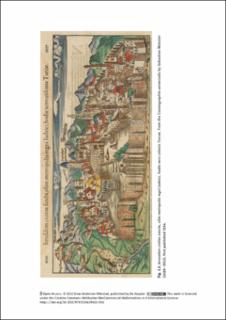The Reformation of the Jerusalem Code in the Sixteenth Century
Chapter
Published version
Permanent lenke
https://hdl.handle.net/11250/3053186Utgivelsesdato
2021Metadata
Vis full innførselSammendrag
The multivalent interpretation of Jerusalem, earthly and celestial, constitutes a code to Scandinavian Christian Culture since its integration into Latin Christendom (ninth–twelfth century). Tracing this code through its Early Modern Period provides a fruitful perspective on vital changes in Church and Society. The process of reformation questioned the medieval perception of holiness and authority, and how this was transferred – from the first beginning of the Church and throughout history, and from Jerusalem to the ends of the world. The paradigm of justification by faith now legitimated both holiness and authority, and hence also the chosen people of God. Nevertheless, in order to legitimate secular and religious authorities, DanishNorwegian and Swedish theologians, closely connected to the political regimes, testify to the pervasiveness of the multivalent employment of Jerusalem by visual sources, poetry, hymns, historiography, and other writings.

